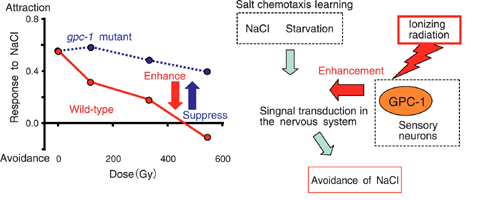
Fig.4-28 Salt chemotaxis learning in C. elegans and radiation effects

Fig.4-29 Radiation responses and the mechanism
Immediately after the discovery of ionizing radiation (IR), it was employed for medical uses as a roentgenography since it has permeability. At present, IR is an indispensable tool for a medical treatment, and has other uses. On the other hand, the biological effects of IR on humans have been studied and accumulated. Recently, effects of IR on the nervous system are drawing attention in the medical and space research fields. An important issue for medicine is the IR-induced suppression of adult neurogenesis in the hippocampus, where neurons are continuously born throughout life and which is an integral site for learning and memory. In space science, acute IR-induced learning impairment and abnormalities in the nervous system are seen as important potential risks associated with interplanetary space missions.
The research background made us to examine the effects of IR on learning using the nematode Caenorhabditis elegans. C. elegans, which is used for study of Alzheimer disease, is an attractive multi-cellular model organism for neurosciences because the connections in its neural network are completely known and has many genes similar to human genes. From experiments with salt chemotaxis learning, we found that only in the transition stage of learning, exposure to an acute dose of IR immediately induced an additional decrease (avoidance) of salt-attraction (Fig.4-28). To investigate the cause of radiation effects, we used a mutant with a deletion of gene. Finally, we found that IR-induced additional avoidance of NaCl was significantly suppressed in the gpc-1 mutant (Fig.4-29), which was defective in GPC-1 (one of the two γ subunits of the heterotrimeric G-protein). It suggests that IR modulates the signal transduction in the nervous system of C. elegans via specific sensory neurons, and so qualitatively and quantitatively alters the salt chemotaxis learning.
In future, we will study the molecular mechanism of IR sensing in the sensory neurons and the effect of signals induced by IR in the nervous system of C. elegans.